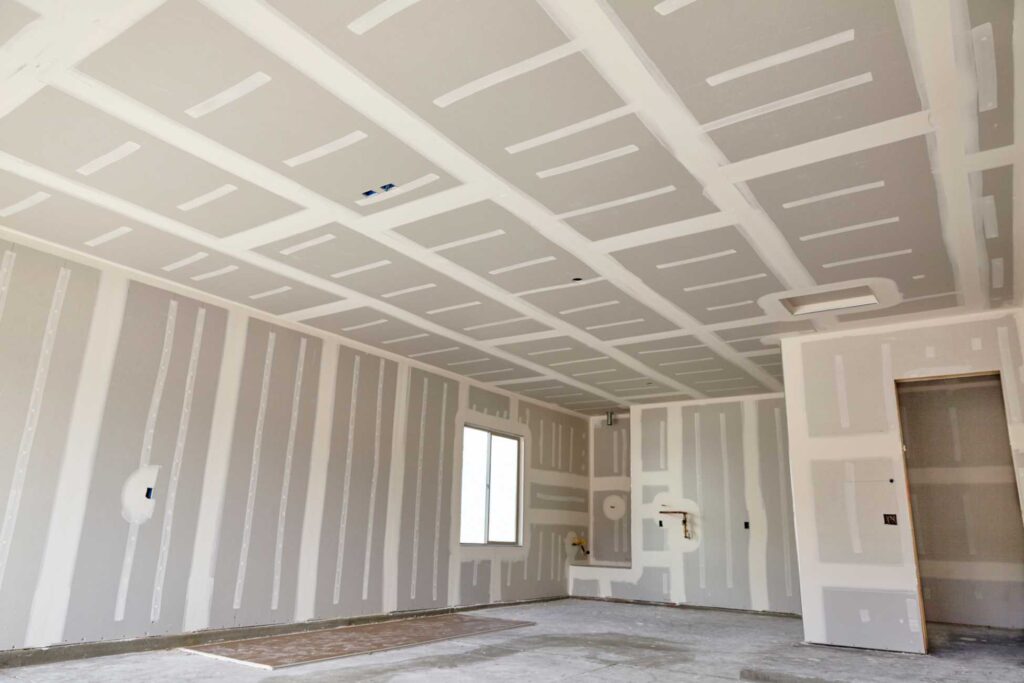What Are the Differences Between Drywall & Plaster?

Plaster vs Drywall: Identifying the Differences
From first-time to seasoned property owners, selecting the right structural improvement materials can be challenging. Fortunately, Westside Drywall & Insulation is here to empower successful remodeling projects. To foster confident and informed investments, let’s explore the differences of plaster vs drywall.
Empowering Informed Wall & Ceiling Upgrades
Navigating plaster vs drywall creates a roadblock for many renovation projects. Both options can be used for wall and ceiling upgrades. However, certain applications are better suited for plaster, whereas others call for drywall. While this may seem complicated, Westside Drywall & Insulation is here to eliminate the guesswork and uncertainty.
The Role of Drywall
Drywall, also called sheetrock, gypsum board, and other names, is a highly sought-after interior construction material. Defined by two sheets of building paper covering a gypsum plaster base, drywall is best suited for indoor ceilings and walls.
The Benefits of Drywall
Drywall is a practical option for those seeking to renovate or install new ceilings or walls. The benefits of this material include:
- Cost-effective investment and affordable installation
- Expedited installation times
- Produces a sleek, modern appearance
- Sufficient thermal performance when combined with robust insulation
- Simple patching and repairs
The Role of Plaster
Dating back to the late 1700s, plaster is a long-standing construction material. Plaster was traditionally characterized by a mixture of sand, cement, water, and minerals. However, modern-day plaster may also contain gypsum and other durable additives. In contrast to drywall sheets, plaster involves a layered application process, raising the importance of professional installation.
The Benefits of Plaster
Plaster involves a more labor-intensive installation process. However, it is known for better results, with benefits including:
- Extended durability, withstanding everyday wear and impact better than drywall
- Textured finish that exudes timeless luxury
- Superior soundproofing and thermal performance
- Minimal maintenance requirements
Understanding Resistance Ratings
The insulative properties of construction materials are ranked using a resistance rating system (R-value). Materials with higher R-values are linked to increased thermal performance, sound absorption, and energy efficiency. If these factors are a priority to you, it’s important to consider the R-value of each material when browsing plaster vs drywall.
The R-Value of Plaster vs Drywall
Drywall holds an R-value of around 0.5/half-inch. This rating equates to reduced sound cancellation but does not negate from drywall’s ability to dampen noise between bedrooms and common areas. If noise reduction is important to you, plaster doubles drywall’s R-value for optimized soundproofing and overall improved insulation capabilities.
When to Consider Drywall
Drywall may fall short compared to plaster’s R-value rating. However, it is still an effective choice when used for the appropriate applications, including:
- For projects with shorter completion deadlines
- You’re renovating a space that will be subjected to future remodels
- You’re willing to commit to periodic maintenance
- You want to avoid the echo produced by plaster
When to Opt for Plaster
When comparing drywall vs plaster, plaster is the more versatile option. Some of the common reasons to opt for plaster include:
- Walls in households with children and pets
- Reinforced fire safety
- Extended performance with minimal upkeep demands
- The ability to add decorative finishes
Is Plaster Better Than Drywall? Making the Right Choice
In short, plaster performs better than drywall in terms of inherent thermal performance, soundproofing, and longevity. However, with proper installation and periodic care, drywall can be equally advantageous. To make the right choice for your home, entrust your project to the experts at Westside Drywall & Insulation.
Learn More About the Difference Between Plaster & Drywall
Reinforce the integrity of your next renovation project with Westside Drywall & Insulation. With comprehensive consultations and personalized recommendations, we’re here to narrow down your material selection to foster unmatched project results. Contact our experts today to learn more about the difference between plaster and drywall.
